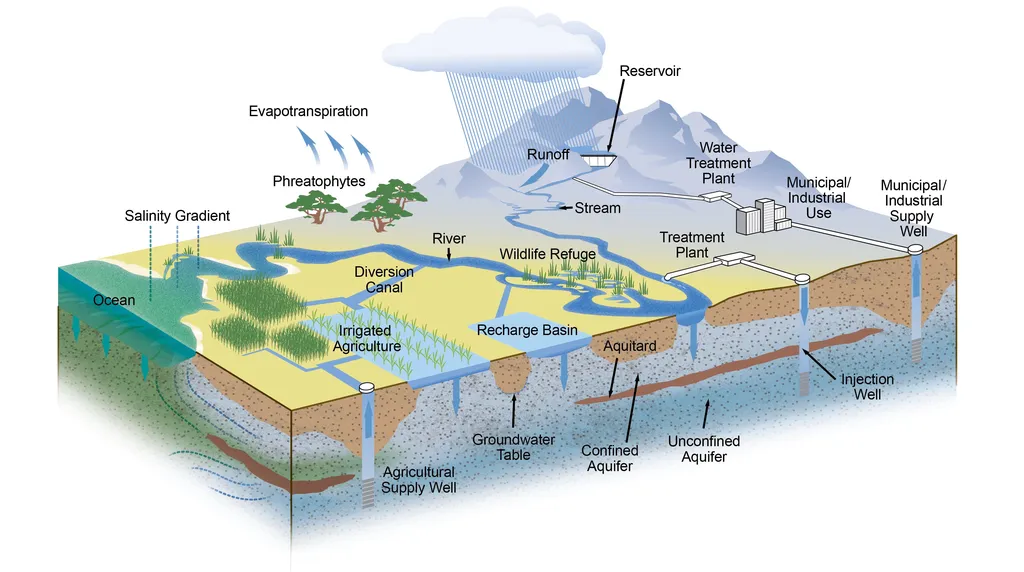In the heart of California, where water is as precious as gold, a groundbreaking study is set to revolutionize how farmers and water managers predict reference evapotranspiration (ET0), a critical factor in water management and irrigation. Published in *Applied Water Science*, the research led by Abhishek Patel from the Department of Computer Science and Information Technology at Guru Ghasidas Vishwavidyalaya, introduces a novel approach to machine learning (ML) models that could significantly enhance water resource management, particularly in data-scarce regions.
The study addresses a longstanding challenge in the agriculture sector: the accurate prediction of ET0, which measures the evapotranspiration from a reference surface, typically grass. Accurate ET0 predictions are vital for optimizing irrigation schedules, conserving water, and ensuring crop health. However, traditional ML models often falter when applied to new locations with limited data, a common scenario in vast and diverse agricultural landscapes.
Patel and his team proposed a regional scenario approach, leveraging datasets from a broader region to train ML models. This method aims to improve the predictive accuracy of ET0 in diverse locations with limited local data. The researchers evaluated classical ML models—linear regression (LR), ridge regression (RR), multilayer perceptron (MLP), and support vector regression (SVR)—alongside ensemble methods like random forest (RF), extra trees (ETs), extreme gradient boosting (XGB), and gradient boosting regression (GBR).
The results were promising. “We found that ensemble techniques, particularly extra trees (ET) and gradient boosting regression (GBR), showed significant improvements in regional scenarios,” Patel explained. The models were validated at two new stations, where ET consistently outperformed GBR, demonstrating robustness as a global model for ET0 prediction in new locations with minimal data.
The performance metrics were impressive, with mean absolute error (MAE) values as low as 0.0974 and root mean square error (RMSE) values as low as 0.1495 in some locations. These findings suggest that a regional approach can enhance ML-based ET0 predictions, offering a reliable tool for smart farming and sustainable water resource management.
The commercial implications for the agriculture sector are substantial. Accurate ET0 predictions can lead to more efficient irrigation practices, reducing water waste and conserving this vital resource. For farmers, this means lower operational costs and improved crop yields, while for water managers, it offers a more precise tool for allocating water resources.
“This research is a game-changer for the agriculture industry,” said a water management expert familiar with the study. “It provides a scalable solution that can be applied across different regions, helping farmers and water managers make data-driven decisions.”
Looking ahead, the study opens up new avenues for research and development in the field of agritech. The success of ensemble ML models in regional scenarios could pave the way for more sophisticated predictive tools that integrate additional environmental and climatic factors. This could lead to even more accurate and reliable predictions, further enhancing water management practices.
As the world grapples with the challenges of climate change and water scarcity, innovative solutions like those proposed by Patel and his team are more crucial than ever. By leveraging the power of machine learning and regional data, the agriculture sector can move towards a more sustainable and efficient future.
The research, published in *Applied Water Science* and led by Abhishek Patel from the Department of Computer Science and Information Technology at Guru Ghasidas Vishwavidyalaya, marks a significant step forward in the quest for smarter, more sustainable water management practices.

